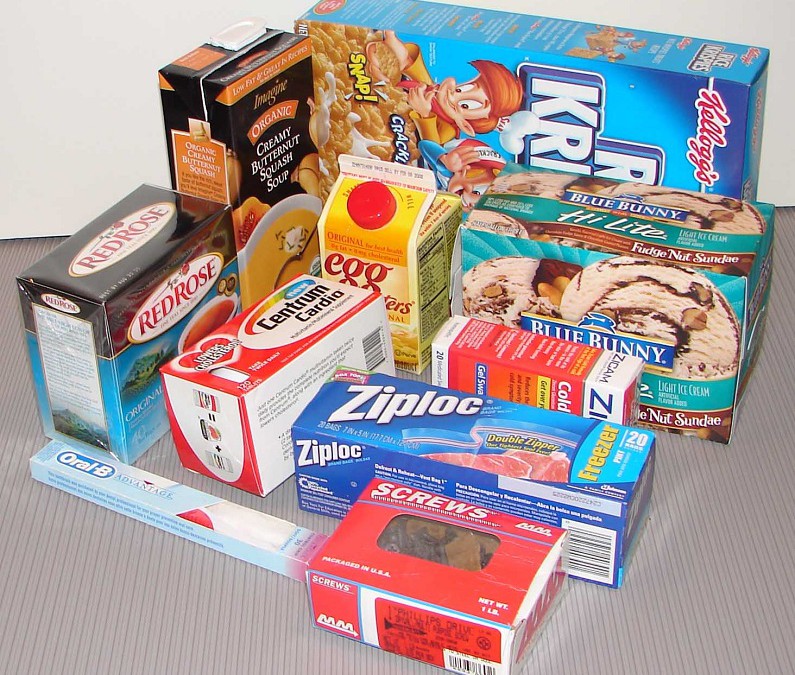
What is a carton? Simply put, it’s a box or some sort of container, usually made from paperboard or cardboard. There is a multitude of different cartons, most of which are used in packaging applications. For instance, you’re probably familiar with egg cartons, as these hold eggs and prevent them from cracking. Folding cartons are another popular type of carton. These come in all different shapes and sizes and are used to store the likes of non-perishable foods, pharmaceuticals and more. Milk cartons, which are also commonly known as “aseptic cartons,” are another popular type, although the majority of these have been replaced with plastic jugs over the years.
While you likely come across cartons often – if not every day – they are arguably one of the things that are likely more taken for granted in life. In fact, the packaging roots of the carton date back to the late 1800s, when Robert Gair created the first carton as we know it today in Brooklyn, New York. Years later, the National Biscuit Company began administering cartons to package its crackers. From there, the carton itself – as well as the equipment that create cartons – evolved into what we now know today.
Cartons are created by a cartooning machine, or a cartoner. Cartoners are divided into two main categories – horizontal machines or vertical machines. As you might have been able to guess by the nature of the two types of cartoners, horizontal machines fill cartons horizontally through an opening, while vertical machines fill them through a top, or vertical, opening.
Now that you know a thing or two about cartons, it’s time to take a look at some of various different types of cartons that have been developed over the years. Here’s a look:
Seal end: This is one of the most popular types of folding cartons, characterized by one end that’s open and one end that’s sealed. Think of them sort of like a cereal box, as the bottom is usually sealed closed, but the top is able to open so that cereal can be poured. Specifically, the carton is glued along its depth and the top and bottom flaps are then folded over and sealed with glue after it has been filled with product.
Sleeve: Just like shrink sleeves, carton sleeves are mostly decorative in nature, and fit over an existing carton or piece of packaging to make it stand out more on store shelves or include some type of special promotion. Sleeves are usually open at both ends and simply slip right over the other carton or packaging.
Aseptic carton: These are the types of cartons that are best used for liquid packaging purposes. Specifically, they’re usually made from the likes of laminate, foil and polyethylene. They’re best utilized for the likes of storing and packaging milk, juice and soup.
Gable top: These types of cartons are similar to aseptic cartons in that they’re used to house liquid substances, such as milk and juice. They consist of polyethylene that’s been coated over liquid packaging board. The big difference between gable top cartons and aseptic cartons, however, is that most gable top cartons are opened by pulling a top out and pulling a spout area out. Some even consist of fitments, which help with pouring.
In terms of aseptic and gable top cartons, it’s also worth noting that these can be further broken down in carton subcategories: refrigerated and shelf stable. As the names imply, refrigerated cartons are designed to go into the refrigerator, while shelf stable ones are not. Hence, where such cartons – and the products inside – will be stored largely dictates how they’re made and what materials they’re made of.
Folding cartons: There are a bevy of different types of folding cartons (including seal end and sleeves that have already been mentioned on this list), but as folding cartons are among the most popular type of carton there is currently, they’re worth a separate entry on this post as well. Folding cartons are available in a variety of different tray styles. Some of the more popular (aside from seal end and sleeve) include tuck top auto bottom, tuck top 1-2-3 bottom, tuck end, four corners beers tray, lock corner tray, kwikset tray and walker lock tray.
Egg cartons: We already touched a bit on egg cartons in the intro to this post, but as they’re one of the more popular and recognizable cartons today, they’re worth mentioning again in a bit more detail. Specifically, egg cartons are usually made from molded pulp. This material uses recycled newsprint to protect the eggs, both during shipment of the product as well as within the home. While molded pulp is still among the most popular material that egg cartons are made of, PET and polystyrene are other popular material options for this carton.
No matter the carton, one thing is for sure – in order to quickly and adequately manufacture cartons, you need a cartoner. And while cartoners speed the carton fabricating process and increase a facility’s efficiency, this is capital equipment – and it’s not cheap. That’s where buying used cartooning equipment from a reputable outlet such as Bid on Equipment comes in handy, especially for facilities that can’t afford a big purchase or that need to unexpectedly replace a damaged or broken cartoner. At Bid on Equipment, you’re able to get like new capital equipment at just a fraction of the price. So instead of spending hundreds of thousands of dollars on cartoners, perhaps you’re buying it tens of thousands of dollars cheaper.
Cartoners play a big role in qualified facilities, as they don’t just create the cartooning at a fast pace, but many can even actually fill the cartons with product and seal the cartons too.
For more information on cartons – and cartooning equipment – contact Bid on Equipment today.